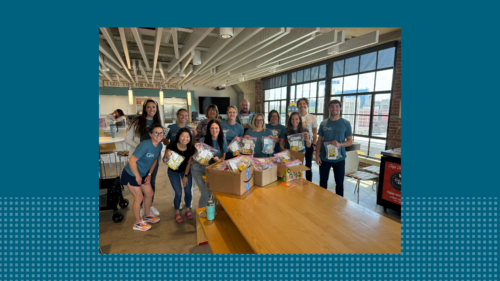Most everything we once considered “normal” flew out the window about 10 months ago — what “appropriate” means for our work attire, what “school” means for our kids, and what “enough” means for our home toilet paper inventory. There are countless other examples… including what “open enrollment” means this year and beyond.
This past Spring, Holmes Murphy’s Employee Benefits Communication team re-engineered our resources and approach so they function more effectively in a more work-from-home world. We’re hoping you can use our approach to evaluate your recently completed campaign, put the finishing touches on your upcoming open enrollment, or improve your next employee communication effort.
Make Open Enrollment More User Friendly
Now, more than ever, successful company communication is all about your people. Let them know you understand what matters to them and eliminate the clutter so they understand you more clearly.
When you’re explaining a complex issue, use examples or stories to get your point across. Describe a few hypothetical employees, then highlight why they are making one choice over other options. People relate much better to stories of “people like me” than they do to charts that list plan provisions.
Our Re-Engineered Approach to Open Enrollment
With messaging reshaped, here is our re-engineered approach to engage and educate employees virtually during open enrollment — and beyond:
Email Campaign
You’ve likely used an email campaign in the past, and it can be effective now, with a few tweaks to content. Consider a series of shorter messages if you’ve gone with the all-in-one email previously.
Open Enrollment Quick Start
Think of the last appliance you purchased. It came with a surprisingly large owner’s manual and a single-page Quick Start Guide, right?
Create a visually appealing one-page PDF to promote your most important resources and provide a “cheat sheet” employees can use while enrolling.
Postcard
Mailing postcards to employees’ homes notifies employees and their family members that open enrollment is approaching. This can spark a conversation about benefits that probably wouldn’t take place otherwise.
Decision Support Tool
Ever have an employee ask, “Why can’t you just tell me what to choose?” A well-designed decision support tool puts employees at ease and back in control of their enrollment decision-making. Some employee benefit administration providers offer integrated options, and several standalone tools are available.
Employee Benefits Guide
Yep, employee benefits guides are still a mainstay. But in a virtual open enrollment, think of it as a digital asset first instead of something that needs to be printed and physically shipped to every employee.
Virtual Info Sessions/Office Hours
Working from home means employees’ schedules are much more varied. So, consider hosting several virtual information sessions where you discuss important information and leave time for Q&A.
You can also create virtual office hours by reserving time slots on your calendar for employees to sign up and ask you questions. Your usual video conferencing platform can make both these options happen.
Virtual Benefits Fair
A basic approach is to use your video conferencing platform with breakout rooms where vendors can have topic-specific sessions. There are also dedicated platforms with “booths,” chat forums, webinars, videos, and more.
Microsite
This goes by several names — digital postcard, benefit resource center, mini-portal. Whatever you call it, these sites create a “best of” version of your intranet resources on an externally hosted platform so your employees and their families can more easily access the resources they need.
Your employee benefits guide, the open enrollment quick start, a short video/recorded presentation, a link to your enrollment site, and a key contacts page are a great place to start.
If you’re unsure how to make this work in your organization, send us a note — we’d be happy to help!







